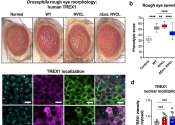Study uncovers hidden DNA mechanisms of rare genetic diseases
Researchers at the Pacific Northwest Research Institute (PNRI) and collaborating institutions have made a discovery that could significantly advance our understanding of genomic disorders. Their latest study, published in ...
Jun 21, 2024
0
71









